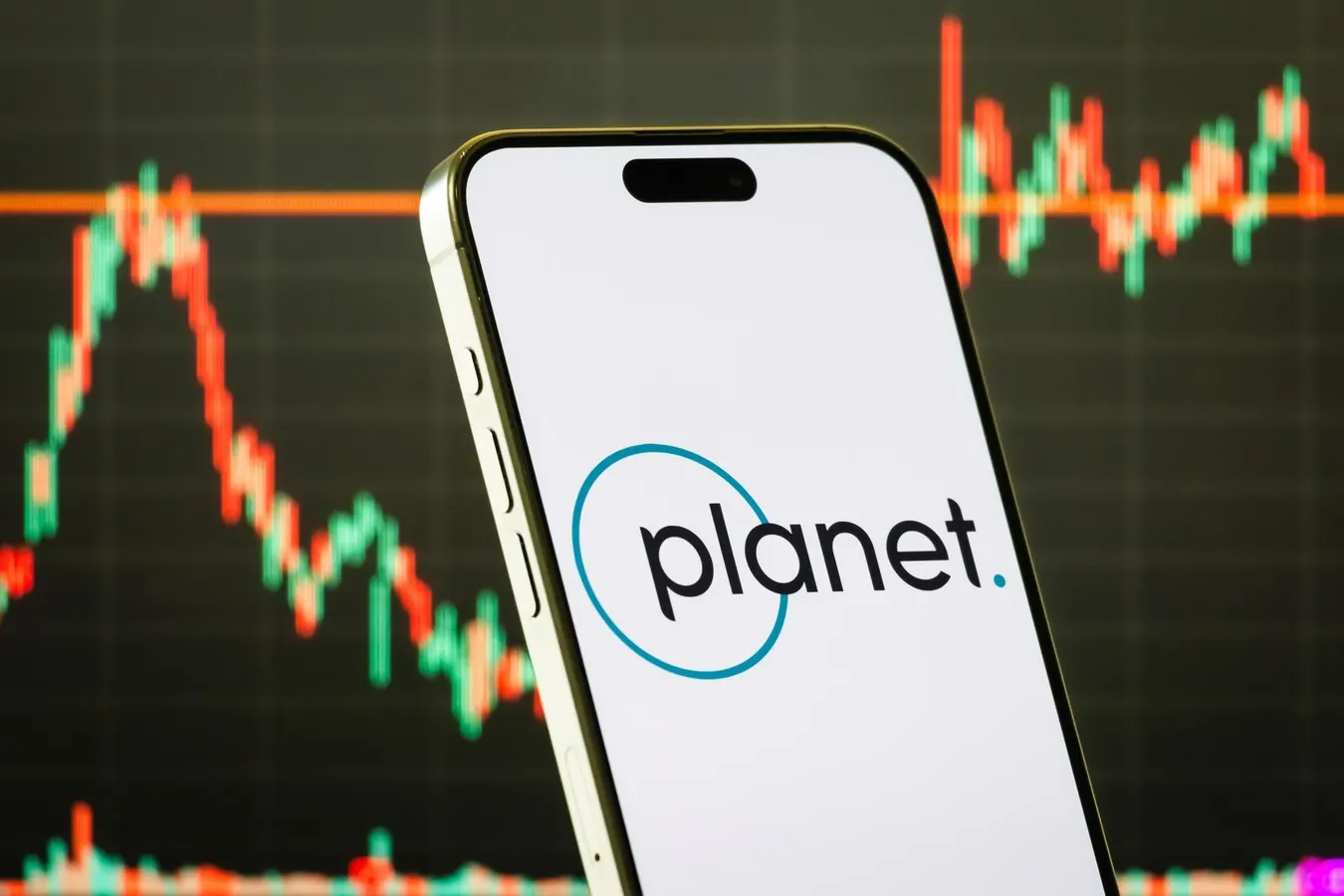By Cheng Xin,Contributor,Trefis Team
Copyright forbes

CHONGQING, CHINA – SEPTEMBER 4: In this photo illustration, a smartphone shows the logo of Planet Labs PBC (NYSE: PL), a U.S. company specializing in Earth imaging and geospatial solutions, with the company’s latest stock market chart seen in the background on September 4, 2025 in Chongqing, China. (Photo illustration by Cheng Xin/Getty Images)
Getty Images
Planet Labs (NYSE:PL), the Earth-imaging and geospatial analytics company based in San Francisco, has evolved from a specialized satellite operator into a swiftly growing AI-driven data platform. Currently, shares are trading near $9, having increased by over 110% year-to-date from their early 2025 lows, as enthusiasm rises around record contract acquisitions, enhanced AI analytics capabilities, and the launch of next-generation satellites. The essential question is: could Planet’s stock price potentially double from this point and approach $20? Let’s analyze this. However, if you are looking for upside with less volatility than owning an individual stock, consider the High Quality Portfolio. This portfolio has significantly outperformed its benchmark—a blend of the S&P 500, Russell, and S&P MidCap indexes—and has delivered returns exceeding 91% since its inception. In addition, check out – Opendoor – OPEN Stock To $9?
Key Factors for Potential Stock Doubling
Explosive Growth and Valuation – Planet recorded revenue of $262 million in fiscal 2025, increasing by over 20% year-over-year. Analysts estimate that revenue may surpass $750 million by 2028, fueled by government, defense, and business needs for real-time geospatial intelligence. At its current market cap of approximately $2.9 billion, Planet trades at around 11× sales. While this multiple is high for a small-cap, if revenue continues to grow at over 25%, even a conservative 8× multiple on 2028 projections would support a share price exceeding $20.
Growing AI Geospatial Business – The company is shifting from merely being a “satellite imagery provider” to a comprehensive AI-powered geospatial insights platform. Its forthcoming Pelican satellite constellation, which promises higher resolution and quicker revisit times, will facilitate premium subscriptions and AI-driven analytics for climate monitoring, agriculture, disaster response, and national security. With near-total utilization of its imagery pipeline and strong gross margins, Planet is poised for profitable scaling as new satellites become operational.
Strategic Contracts and Infrastructure – Planet has achieved several notable multi-year contracts, which include a €240 million deal with the German government, a multi-year defense agreement with Colombia, and extensions with U.S. intelligence agencies. Its expanding backlog (exceeding $600 million) offers significant revenue visibility. Furthermore, by embedding AI into its geospatial platform, Planet is creating sticky, recurring revenue streams that are comparable to SaaS-style business models.
Cost-Effective Structure – In contrast to hyperscale cloud competitors, Planet operates one of the largest satellite fleets globally, providing it with a vertically integrated cost advantage. With existing satellites in orbit and new launches benefiting from reusable rockets and advanced sensor technology, Planet’s unit economics are improving, making data delivery more affordable and scalable compared to rivals who depend on third-party sources.
Risk Factors That May Hinder This Growth
Past Volatility and Profitability Issues – Planet’s stock has shown high volatility, dropping almost 80% from its post-SPAC peak before the rebound in 2025. Despite significant revenue growth, the company continues to be unprofitable, losing approximately $90 million each year. Ongoing net losses could negatively impact investor sentiment if timelines for profitability are delayed.
Market Competition and Technology Risks – The geospatial data market is becoming more competitive, with startups, established aerospace companies, and cloud hyperscalers developing satellite imaging or analytics services. Rapid technological advancements also present risks — Planet must continuously invest in updated sensors and AI models to prevent obsolescence.
Execution and Valuation Risks – With an 11× sales multiple, Planet’s stock already reflects considerable growth expectations. Any delays in the deployment of Pelican satellites, contract fulfillment, or customer uptake could jeopardize the doubling projection. If growth falls short of expectations, multiple compression could bring shares down toward the single-digit range.
Investment Conclusion
Planet Labs presents an attractive growth narrative within the space-tech and AI geospatial intelligence sector. The company’s unique blend of possessing the world’s largest commercial satellite fleet, robust government ties, and growing AI analytics positions it strongly to evolve into a billion-dollar revenue organization.
The rationale behind the prospect of a stock price doubling to $20 is simple: with revenue expected to nearly triple by 2028, even moderate compression of its current sales multiple will still sustain elevated share prices.
Nevertheless, investors should be aware of the risks involved. Planet’s history of volatility, ongoing unprofitability, and fierce competition categorize this as a high-risk, high-reward investment. For investors optimistic about the increasing significance of geospatial intelligence and AI-driven Earth data, Planet Labs could represent one of the most compelling opportunities of 2025 — although the journey may not be easy.
MORE FOR YOU
There is always a significant risk when investing in a single, or a small number of stocks. Consider the Trefis High Quality (HQ) Portfolio which, comprising 30 stocks, has a proven record of consistently outperforming the S&P 500 over the past 4-year period. What accounts for this? Overall, HQ Portfolio stocks have delivered better returns with less risk compared to the benchmark index; providing less of a roller-coaster experience, as demonstrated in HQ Portfolio performance metrics.
Editorial StandardsReprints & Permissions



